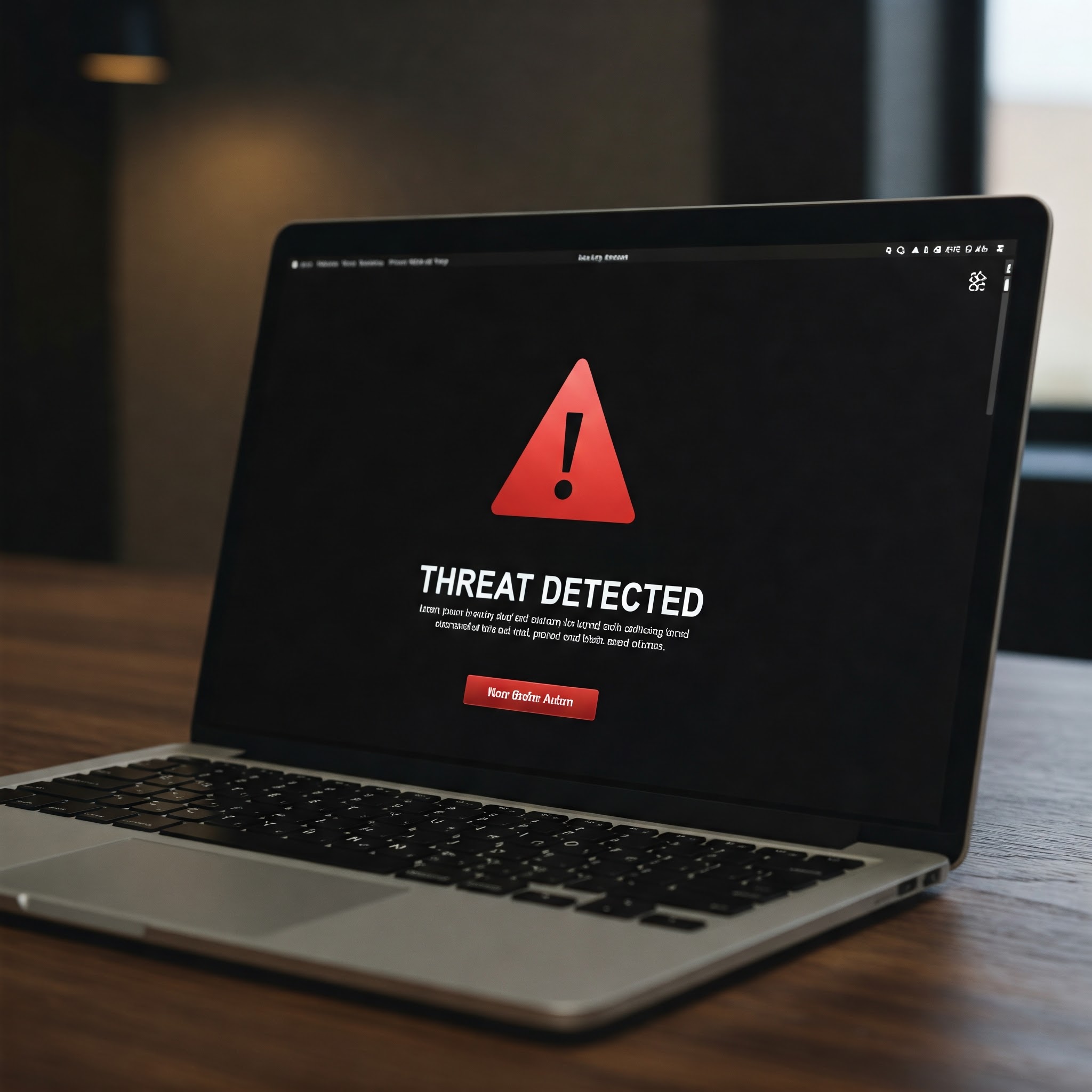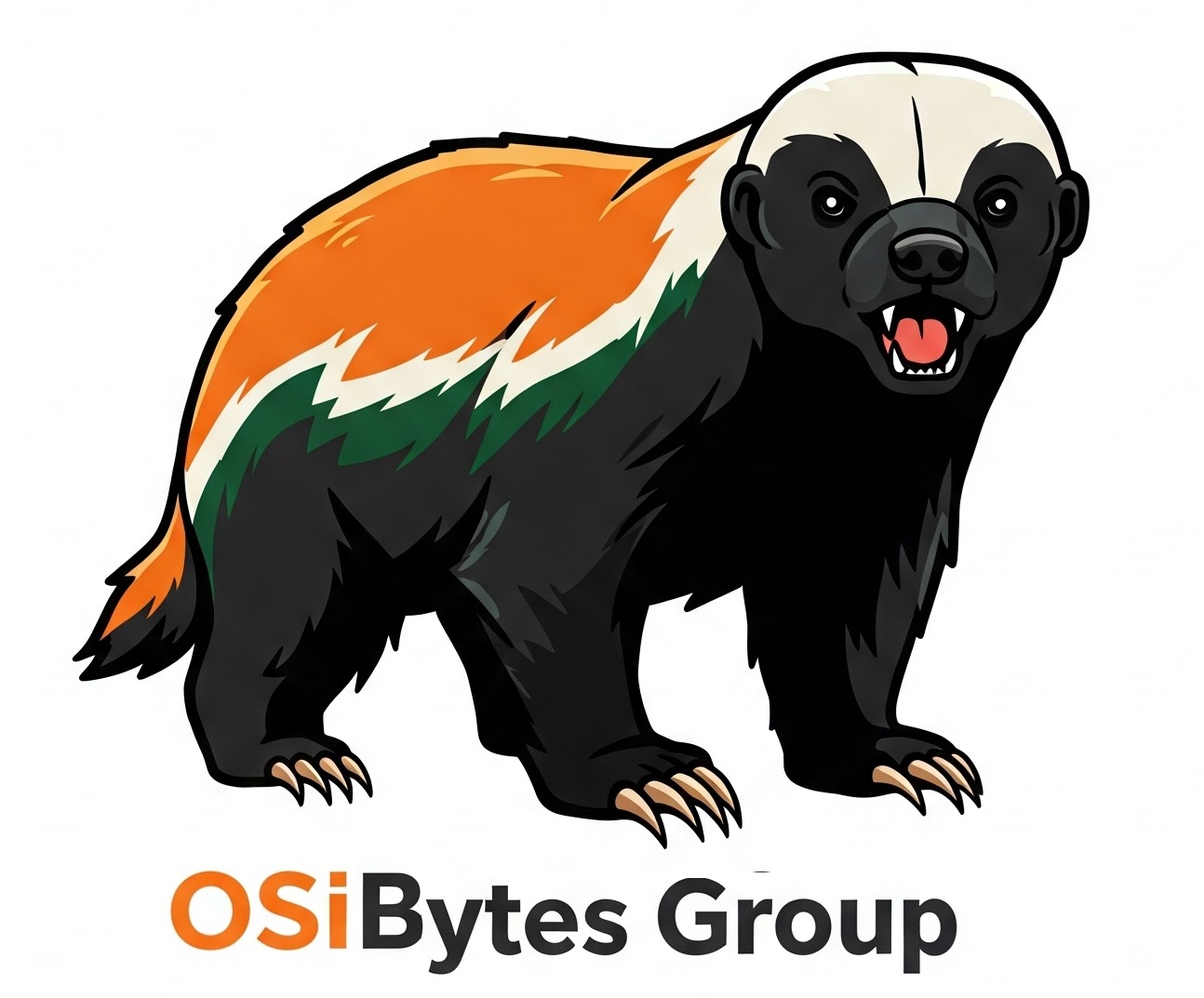Cybersecurity Regulation and Compliance - March 2025
Overview of Cybersecurity
Cybersecurity involves protecting information technology systems, networks, and data from unauthorized access, cyberattacks (e.g., ransomware, phishing, malware), and breaches. Its primary goal is to safeguard sensitive information—personal, financial, or operational—while ensuring the integrity, confidentiality, and availability of digital assets. As cyber threats evolve with technologies like AI, IoT, and cloud computing, governments and organizations worldwide have established legal frameworks, standards, and sector-specific requirements to mitigate risks and ensure compliance.
Legal Obligations and Requirements
Cybersecurity, Data Protection, and Incident Response By Sector
Last updated: March 15, 2025
* Financial Services
Last updated: March 15, 2025
----
1. Cybersecurity Regulations and Requirements
----
🔹 U.S. Regulations
A. Gramm-Leach-Bliley Act (GLBA) – Safeguards Rule
- Develop and maintain a comprehensive information security program.
- Implement encryption for sensitive data.
- Conduct annual risk assessments.
B. SEC Cybersecurity Rules (2023)
- Establish formal cyber risk management policies.
- Disclose material cybersecurity risks and incidents in annual filings.
C. NYDFS Cybersecurity Regulation (23 NYCRR 500)
- Appoint a CISO to oversee the program.
- Implement multi-factor authentication (MFA).
- File an annual compliance certificate.
D. Federal Trade Commission (FTC) Safeguards Rule
- Encrypt customer data at rest and in transit.
- Monitor and test systems regularly for vulnerabilities.
----
🔹 EU Regulations
A. General Data Protection Regulation (GDPR)
- Obtain explicit consent for data processing.
- Notify regulators of data breaches within 72 hours.
B. Digital Operational Resilience Act (DORA) – Effective 2025
- Conduct regular penetration testing and stress testing.
- Report significant cyber threats and disruptions.
C. Network and Information Security Directive (NIS2) – Effective 2024
- Report major cybersecurity incidents within 24 hours.
- Establish business continuity and disaster recovery protocols.
----
2. Data Protection Regulations and Requirements
----
🔹 U.S. Regulations
A. GLBA – Financial Privacy Rule
- Notify customers of data collection and sharing practices.
- Provide opt-out options for data sharing.
B. California Consumer Privacy Act (CCPA) / California Privacy Rights Act (CPRA)
- Disclose how personal data is used.
- Allow consumers to delete or restrict data processing.
----
🔹 EU Regulations
A. GDPR
- Apply data minimization and purpose limitation principles.
- Ensure secure storage and transmission of personal data.
----
3. Incident Response Regulations and Requirements
----
🔹 U.S. Regulations
A. SEC Cybersecurity Rules
- Report significant cybersecurity incidents within 4 business days.
B. NYDFS Cybersecurity Regulation
- Report significant events within 72 hours to NYDFS.
C. FTC Safeguards Rule
- Report breaches involving 500+ consumers within 30 days.
----
🔹 EU Regulations
A. GDPR
- Report breaches to regulators within 72 hours.
B. DORA
- Report major cyber incidents within 4 hours of detection.
C. NIS2
- Report significant incidents within 24 hours.
----
4. Cross-Jurisdictional Challenges
----
- Overlapping reporting requirements.
- Third-party risks and cloud security challenges.
----
5. Best Practices for Compliance and Resilience
- Develop an integrated cybersecurity framework.
- Conduct annual penetration testing and tabletop exercises.
- Ensure third-party providers comply with regulatory requirements.
----
* Healthcare Services
Last updated: March 15, 2025
----
1. Cybersecurity Regulations and Requirements
----
🔹 U.S. Regulations
A. Health Insurance Portability and Accountability Act (HIPAA) – Security Rule
- Implement administrative, physical, and technical safeguards to protect electronic Protected Health Information (ePHI).
- Use encryption for data at rest and in transit.
- Conduct regular risk assessments and audits.
- Ensure secure access control and authentication.
B. Health Information Technology for Economic and Clinical Health Act (HITECH)
- Strengthens HIPAA enforcement and penalties for data breaches.
- Requires notification of breaches affecting 500+ individuals to the Department of Health and Human Services (HHS).
- Expands HIPAA requirements to business associates and third-party vendors.
C. Food and Drug Administration (FDA) Cybersecurity Guidance
- Mandates secure software development for medical devices.
- Requires ongoing monitoring and patching of vulnerabilities.
- Establishes a framework for post-market cybersecurity risk management.
----
🔹 EU Regulations
A. General Data Protection Regulation (GDPR)
- Classifies health data as "sensitive data" requiring enhanced protection.
- Requires explicit consent for processing health data.
- Data breaches must be reported within 72 hours.
- Imposes strict requirements for data minimization and purpose limitation.
B. Network and Information Security Directive (NIS2) – Effective 2024
- Applies to healthcare providers and medical device manufacturers.
- Requires real-time network monitoring and threat detection.
- Mandates business continuity and disaster recovery plans.
- Incidents must be reported within 24 hours.
C. Medical Device Regulation (MDR)
- Requires medical device manufacturers to implement secure-by-design practices.
- Mandates software updates to address emerging threats.
- Requires cybersecurity risk assessments for medical devices.
----
2. Data Protection Regulations and Requirements
----
🔹 U.S. Regulations
A. HIPAA – Privacy Rule
- Limits the use and disclosure of Protected Health Information (PHI).
- Requires patient authorization for data sharing.
- Provides patients with access to their health records.
B. HITECH Act
- Expands patient rights to access and control their health data.
- Requires electronic copies of health records to be provided upon request.
----
🔹 EU Regulations
A. GDPR
- Provides patients with the right to access, correct, and delete their health data.
- Requires consent for sharing health data with third parties.
B. ePrivacy Regulation (Proposed)
- Enhances privacy protections for electronic communications in healthcare.
- Requires encryption and secure transmission of health data.
----
3. Incident Response Regulations and Requirements
----
🔹 U.S. Regulations
A. HIPAA – Breach Notification Rule
- Requires notification of breaches to HHS within 60 days.
- Notify affected patients without unreasonable delay.
- If breach impacts 500+ individuals, notify the media.
B. HITECH Act
- Expands breach reporting to business associates.
- Requires encryption of electronic PHI to avoid breach penalties.
----
🔹 EU Regulations
A. GDPR
- Report data breaches to regulators within 72 hours.
- Notify affected individuals if the breach poses a high risk.
B. NIS2
- Report significant cyber incidents within 24 hours.
- Submit a follow-up report within 72 hours with impact details.
----
4. Cross-Jurisdictional Challenges
----
- Overlapping breach notification requirements (HIPAA vs GDPR).
- Third-party vendor security and accountability.
- Data localization and cross-border transfer restrictions.
----
5. Best Practices for Compliance and Resilience
- Develop a unified incident response plan aligned with HIPAA and GDPR.
- Implement real-time threat detection and monitoring.
- Encrypt data at rest and in transit.
- Conduct regular staff training on security and data protection.
----
* Critical Infrastructure Services
Last updated: March 15, 2025
1. Cybersecurity Regulations and Requirements
🔹 U.S. Regulations
A. Cybersecurity and Infrastructure Security Agency (CISA) Act
- Establishes CISA as the lead agency for securing critical infrastructure from cyber threats.
- Provides threat intelligence and best practices for securing critical infrastructure sectors.
B. Critical Infrastructure Protection (CIP) Standards (NERC)
- Mandates cybersecurity controls for the energy sector (electricity and utilities).
- Requires real-time threat monitoring, secure access control, and regular audits.
C. Executive Order 14028 (Improving the Nation’s Cybersecurity)
- Requires federal agencies and critical infrastructure operators to adopt zero trust architecture.
- Mandates the use of multi-factor authentication (MFA) and encryption for data protection.
D. Transportation Security Administration (TSA) Directives
- Applies to pipelines, rail systems, and aviation infrastructure.
- Requires incident reporting within 12 hours of detection.
- Mandates cybersecurity training and threat assessments.
🔹 EU Regulations
A. Network and Information Security Directive (NIS2) – Effective 2024
- Applies to critical infrastructure sectors, including energy, transport, health, and water.
- Mandates real-time threat detection and incident response within 24 hours.
B. Critical Entities Resilience (CER) Directive – Effective 2024
- Requires critical infrastructure operators to assess risks and develop resilience plans.
- Includes protection against both physical and cyber threats.
C. European Energy Security Strategy
- Focuses on securing energy supply chains and preventing cyber disruptions.
- Requires cross-border cooperation and threat intelligence sharing.
2. Data Protection Regulations and Requirements
🔹 U.S. Regulations
A. Health Insurance Portability and Accountability Act (HIPAA)
- Applies to healthcare infrastructure and data-handling entities.
- Mandates encryption and access control for sensitive data.
B. Federal Energy Regulatory Commission (FERC) Data Protection Rules
- Requires secure storage and transmission of customer energy data.
- Mandates customer consent for data sharing.
🔹 EU Regulations
A. General Data Protection Regulation (GDPR)
- Applies to critical infrastructure operators handling EU citizen data.
- Mandates data protection by design and by default.
- Requires breach notification within 72 hours.
B. NIS2 Directive
- Mandates secure handling of operational and customer data.
- Requires data encryption and access control.
3. Incident Response Regulations and Requirements
🔹 U.S. Regulations
A. CISA Incident Reporting Requirements
- Requires critical infrastructure operators to report cyber incidents within 72 hours.
- Must provide updates and post-incident analysis.
B. TSA Pipeline Security Directive
- Requires reporting of security breaches within 12 hours.
- Mandates annual penetration testing and incident response drills.
🔹 EU Regulations
A. NIS2 Directive
- Requires initial incident reporting within 24 hours.
- Final report with root cause analysis due within 72 hours.
B. CER Directive
- Requires threat mitigation plans and recovery strategies.
- Mandates post-incident reviews and corrective action plans.
4. Cross-Jurisdictional Challenges
- Complexity in complying with both U.S. and EU incident response timelines.
- Third-party risk from global supply chain partners.
- Coordination between government agencies and private operators.
5. Best Practices for Compliance and Resilience
- Develop a unified incident response plan aligned with NIS2 and CISA requirements.
- Encrypt all sensitive data and implement MFA.
- Perform regular penetration testing and red team exercises.
- Establish secure communication channels with regulatory agencies.
* Technology and Digital Services
Last updated: March 15, 2025
1. Cybersecurity Regulations and Requirements
🔹 U.S. Regulations
A. Federal Trade Commission (FTC) Act
- Mandates that technology companies ensure reasonable security measures for customer data.
- Prohibits deceptive security practices.
B. Cybersecurity Information Sharing Act (CISA)
- Encourages information sharing about cyber threats between private companies and the government.
- Provides liability protection for companies that share threat data with federal agencies.
C. State-Level Regulations (e.g., CCPA/CPRA)
- California Consumer Privacy Act (CCPA) and California Privacy Rights Act (CPRA) require companies to protect consumer data.
- Consumers must be able to request access, deletion, and restriction of their data.
D. SEC Cybersecurity Rules (2023)
- Public technology companies must disclose material cybersecurity incidents within 4 business days.
- Annual disclosure of cybersecurity governance and risk management practices.
🔹 EU Regulations
A. General Data Protection Regulation (GDPR)
- Applies to all technology companies processing EU citizen data, regardless of location.
- Requires companies to implement data protection by design and by default.
- Mandates data breach notification within 72 hours.
B. Digital Services Act (DSA) – Effective 2024
- Applies to online platforms, including marketplaces and social networks.
- Requires transparency in algorithms and content moderation policies.
- Mandates prompt removal of illegal content.
C. Network and Information Security Directive (NIS2) – Effective 2024
- Applies to cloud providers, data centers, and online platforms.
- Requires real-time threat monitoring and incident reporting within 24 hours.
2. Data Protection Regulations and Requirements
🔹 U.S. Regulations
A. CCPA/CPRA
- Provides consumers with the right to access, delete, and restrict processing of their data.
- Requires transparency on how personal data is used and shared.
B. Children's Online Privacy Protection Act (COPPA)
- Requires verifiable parental consent for collecting data from children under 13.
- Prohibits sharing of children’s data without consent.
🔹 EU Regulations
A. GDPR
- Mandates encryption and secure storage of personal data.
- Consumers have the right to access, rectify, and delete their data.
B. ePrivacy Directive
- Requires consent for tracking cookies and similar technologies.
- Limits data retention periods for personal data.
3. Incident Response Regulations and Requirements
🔹 U.S. Regulations
A. SEC Cybersecurity Rules
- Requires disclosure of material cybersecurity incidents within 4 business days.
B. State-Level Breach Notification Laws
- Most states require notification of data breaches within 30 to 60 days.
🔹 EU Regulations
A. GDPR
- Requires notification of data breaches within 72 hours.
- Must notify affected individuals if the breach is likely to result in harm.
B. NIS2
- Requires reporting of significant incidents within 24 hours.
- Follow-up reports with full details must be submitted within 72 hours.
4. Cross-Jurisdictional Challenges
- Overlapping requirements under GDPR and CCPA/CPRA.
- Third-party risk management in cloud and SaaS environments.
- Global differences in breach notification timeframes.
5. Best Practices for Compliance and Resilience
- Develop a unified incident response plan aligned with GDPR and CCPA/CPRA.
- Encrypt data at rest and in transit.
- Implement MFA and role-based access control (RBAC).
- Regularly test disaster recovery and business continuity plans.
* Business and Consumer Data Services
Last updated: March 15, 2025
1. Cybersecurity Regulations and Requirements
🔹 U.S. Regulations
A. Federal Trade Commission (FTC) Act
- Prohibits unfair or deceptive practices, including failure to implement reasonable data security measures.
- Empowers the FTC to investigate and take action against businesses for data breaches and weak security practices.
B. Cybersecurity Information Sharing Act (CISA)
- Encourages businesses to share cyber threat information with the federal government.
- Provides liability protection for businesses that share threat data in good faith.
C. California Consumer Privacy Act (CCPA) and California Privacy Rights Act (CPRA)
- Gives consumers the right to know what data is collected and request its deletion.
- Requires businesses to disclose data sharing practices and honor consumer opt-out requests.
D. New York SHIELD Act
- Mandates businesses to implement reasonable cybersecurity controls to protect personal data.
- Requires timely notification of data breaches to affected consumers and authorities.
🔹 EU Regulations
A. General Data Protection Regulation (GDPR)
- Applies to all businesses handling personal data of EU citizens, regardless of location.
- Mandates data protection by design, encryption, and secure data processing.
- Requires breach notification within 72 hours.
B. ePrivacy Directive
- Regulates the use of cookies and other tracking technologies.
- Requires consumer consent for data collection and tracking.
2. Data Protection Regulations and Requirements
🔹 U.S. Regulations
A. Gramm-Leach-Bliley Act (GLBA)
- Requires financial institutions to explain data-sharing practices to customers.
- Mandates secure handling of sensitive financial information.
B. Children's Online Privacy Protection Act (COPPA)
- Applies to online services collecting data from children under 13.
- Requires parental consent before collecting personal data.
C. State Data Protection Laws
- Many U.S. states have their own data protection laws (e.g., Virginia, Colorado, Connecticut).
- Often require disclosure of data breaches and consumer opt-out mechanisms.
🔹 EU Regulations
A. GDPR
- Data protection impact assessments (DPIAs) required for high-risk data processing.
- Consumers have the right to access, correct, and delete their data.
B. ePrivacy Regulation (Upcoming)
- Expected to replace the ePrivacy Directive.
- Will enhance consumer privacy for electronic communications.
3. Incident Response Regulations and Requirements
🔹 U.S. Regulations
A. State Breach Notification Laws
- All 50 states require businesses to notify affected individuals of data breaches.
- Timeframes for notification vary from 48 hours to 30 days.
B. CISA Incident Reporting Requirements
- Critical infrastructure operators and businesses in key sectors must report incidents within 72 hours.
- Encourages cooperation with federal authorities during investigations.
🔹 EU Regulations
A. GDPR
- Requires notification of personal data breaches to regulators within 72 hours.
- Impacted individuals must be informed without undue delay if there’s a high risk to their rights.
B. NIS2 Directive
- Requires businesses providing digital services to report security incidents within 24 hours.
- Final report due within 72 hours with remediation plans.
4. Cross-Jurisdictional Challenges
- Differences between U.S. and EU data protection rules complicate global compliance.
- Conflicts between state and federal regulations within the U.S.
- Managing data residency and transfer requirements under GDPR and U.S. data protection laws.
5. Best Practices for Compliance and Resilience
- Establish a comprehensive incident response plan aligned with GDPR and U.S. state laws.
- Encrypt all sensitive consumer data at rest and in transit.
- Implement role-based access control and multi-factor authentication.
- Conduct regular audits and penetration testing.
* General Security and Frameworks
Last updated: March 15, 2025
1. Cybersecurity Frameworks
🔹 NIST Cybersecurity Framework (CSF) – U.S.
- Provides a set of guidelines and best practices for managing cybersecurity risks.
- Organized into five core functions: Identify, Protect, Detect, Respond, and Recover.
- Widely adopted by federal agencies and private sector organizations.
🔹 ISO/IEC 27001 – International
- Specifies requirements for establishing, implementing, maintaining, and continually improving an Information Security Management System (ISMS).
- Focuses on risk management and continuous improvement.
🔹 CIS Critical Security Controls (CIS Controls) – U.S.
- Set of 18 prioritized actions to improve cybersecurity defenses.
- Focuses on threat mitigation and protection of critical assets.
🔹 COBIT – International
- Framework for governance and management of enterprise IT.
- Emphasizes risk management, compliance, and aligning IT with business objectives.
2. Data Protection Frameworks
🔹 GDPR – EU
- Mandates strict requirements for the collection, processing, and storage of personal data.
- Gives individuals the right to access, correct, and delete their personal data.
- Requires breach notification within 72 hours.
🔹 California Consumer Privacy Act (CCPA) – U.S.
- Gives consumers the right to know what personal data is collected and request deletion.
- Requires businesses to provide an opt-out for data sharing and selling.
🔹 Privacy Shield (Invalidated) – U.S./EU
- Former framework for transatlantic data transfers (replaced by new agreements).
- Businesses must now comply with new EU-U.S. Data Privacy Framework agreements.
🔹 Data Privacy Framework (DPF) – U.S./EU
- Framework for lawful data transfers between the U.S. and EU.
- Ensures data protection and privacy compliance on both sides of the Atlantic.
3. Incident Response Frameworks
🔹 NIST 800-61 (Computer Security Incident Handling Guide) – U.S.
- Outlines best practices for incident response planning and execution.
- Incident handling phases: Preparation, Detection and Analysis, Containment, Eradication, Recovery, and Post-Incident Activity.
🔹 GDPR – EU
- Requires organizations to notify authorities of personal data breaches within 72 hours.
- Impacted individuals must be informed without undue delay if there’s a high risk to their rights.
🔹 CISA Incident Reporting Requirements – U.S.
- Critical infrastructure operators and key sector businesses must report incidents within 72 hours.
- Encourages cooperation with federal authorities during investigations.
🔹 ISO/IEC 27035 – International
- Provides guidelines for incident management and response.
- Focuses on early detection, rapid response, and effective communication.
4. Cross-Jurisdictional Challenges
- Conflicts between U.S. federal and state data protection laws.
- Differences in breach notification timelines between the U.S. and EU.
- Data transfer requirements under GDPR versus U.S. laws.
5. Best Practices for Compliance and Resilience
- Develop and test an incident response plan aligned with NIST and GDPR requirements.
- Implement encryption and secure data handling for personal and sensitive information.
- Adopt a zero-trust security model and multi-factor authentication.
- Conduct regular penetration testing and vulnerability assessments.
* General Incident Response
Last updated: March 15, 2025
1. Incident Response Frameworks
🔹 NIST 800-61 (Computer Security Incident Handling Guide) – U.S.
- Defines the four key phases of incident response:
- Preparation – Develop and implement an incident response plan.
- Detection and Analysis – Identify and analyze the nature of the incident.
- Containment, Eradication, and Recovery – Mitigate damage, remove the threat, and restore systems.
- Post-Incident Activity – Conduct a lessons-learned review to improve future responses.
🔹 ISO/IEC 27035 – International
- Provides guidelines for information security incident management.
- Outlines a structured approach to identifying, managing, and recovering from incidents.
- Includes early detection, damage minimization, and recovery as key principles.
🔹 CIS Critical Security Controls (CIS Controls) – U.S.
- Focuses on threat detection and response as part of a broader security strategy.
- Emphasizes rapid containment and eradication of threats.
2. Incident Reporting Regulations
🔹 U.S. Regulations
A. State Breach Notification Laws
- All 50 states have breach notification requirements.
- Timeframes for notification vary between 48 hours and 30 days.
B. Cybersecurity Information Sharing Act (CISA)
- Requires critical infrastructure operators to report cyber incidents within 72 hours.
- Encourages businesses to share threat data with federal authorities.
C. New York Department of Financial Services (NYDFS) Regulation
- Requires financial institutions to report cybersecurity events within 72 hours.
🔹 EU Regulations
A. General Data Protection Regulation (GDPR)
- Requires notification of personal data breaches to regulators within 72 hours.
- Impacted individuals must be informed without undue delay if there’s a high risk to their rights.
B. NIS2 Directive
- Requires providers of essential services and digital services to report incidents within 24 hours.
- Final incident report required within 72 hours, including remediation measures.
3. Cross-Jurisdictional Challenges
- Differences in notification timelines between U.S. state laws and GDPR.
- Conflicts between federal and state incident response regulations in the U.S.
- Challenges in coordinating multinational incident response under varying legal frameworks.
4. Best Practices for Incident Response
- Establish a dedicated incident response team (IRT) with clear roles and responsibilities.
- Develop and test an incident response plan regularly.
- Implement automated threat detection and response systems.
- Ensure secure logging and monitoring of systems.
- Conduct post-incident reviews to identify gaps and improve future responses.
5. Regulatory Trends and Future Developments
- Greater alignment of U.S. and EU incident response requirements (e.g., NIS2 and CISA).
- Increased penalties for non-compliance with reporting timelines.
- Growing emphasis on threat intelligence sharing and collaboration.
* Emerging Cybersecurity Trends and Considerations
Last updated: March 15, 2025
1. Rise of AI-Driven Cyberattacks
- Attackers are increasingly using AI and machine learning to automate and refine attack methods.
- Deepfake attacks and AI-generated phishing scams are becoming more sophisticated and harder to detect.
- AI-enhanced malware can adapt in real-time to evade detection.
2. Zero Trust Architecture (ZTA) Adoption
- Organizations are adopting Zero Trust principles to limit access based on user identity and behavior.
- Continuous verification of user credentials and device integrity is required.
- Micro-segmentation and least-privilege access policies are key components of ZTA.
3. Ransomware Evolution and Double Extortion
- Ransomware attacks now involve not only data encryption but also data theft and extortion.
- Attackers threaten to publish sensitive data if ransom demands are not met.
- Growing trend of ransomware-as-a-service (RaaS) allows even low-skill attackers to launch sophisticated attacks.
4. Cloud Security and Shared Responsibility
- Misconfigured cloud storage remains a major vulnerability.
- Increased focus on securing APIs and containerized applications.
- Emphasis on encryption, access controls, and multi-factor authentication (MFA).
5. Supply Chain Vulnerabilities
- Rise in attacks targeting third-party vendors and service providers.
- Organizations are implementing stricter third-party risk management programs.
- SBOM (Software Bill of Materials) adoption is growing to improve visibility into software components.
6. Cybersecurity Regulation and Compliance
🔹 U.S.
- New SEC rules require publicly traded companies to disclose material cybersecurity incidents within 4 business days.
- FTC is strengthening regulations around data privacy and protection.
🔹 EU
- NIS2 Directive expands the scope of cybersecurity regulations for essential and digital service providers.
- GDPR remains the cornerstone of data protection and breach notification requirements.
7. Rise of Quantum Computing Threats
- Advances in quantum computing could potentially break current encryption methods.
- Organizations are investing in quantum-resistant encryption algorithms.
- NIST is leading efforts to standardize post-quantum cryptography (PQC).
8. Identity and Access Management (IAM) Enhancements
- Growing adoption of passwordless authentication using biometrics and hardware keys.
- Use of AI for anomaly detection in login patterns and privileged access sessions.
- Emphasis on decentralized identity (DID) to give users greater control over personal data.
9. Cyber Insurance Market Changes
- Premiums for cyber insurance are rising due to increased attack frequency and severity.
- Insurers are imposing stricter security controls and compliance requirements.
- Some insurers are excluding ransomware-related damages from coverage.
10. Increased Focus on Incident Response and Recovery
- Organizations are expanding incident response teams and improving recovery capabilities.
- More businesses are adopting automated incident response platforms (SOAR).
- Emphasis on rapid containment, forensic investigation, and post-incident analysis.
Conclusion
Cybersecurity in 2025 is governed by a complex web of legal obligations tailored to sectoral needs, reinforced by standards like NIST CSF and ISO 27001, and driven by acts addressing both general and specific threats. Organizations must navigate these requirements—often overlapping across jurisdictions—by adopting robust security measures, staying compliant with reporting mandates, and aligning with international best practices to mitigate risks and avoid penalties.




